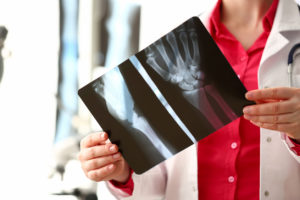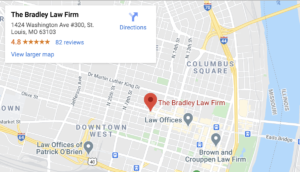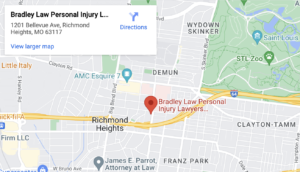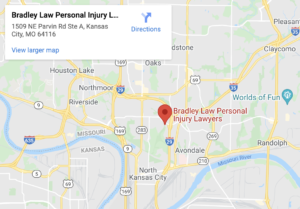
Broken bones happen all the time. For most patients, doctors take an X-ray, set the fracture in a cast, and send the patient home. However, about half of fractures require hospitalization or surgery.
For these patients, a broken bone is a painful and expensive experience. If the broken bone resulted from an avoidable accident, the patient may seek compensation through an injury claim.
Here are the things that you should know about the causes and effects of broken bones and the ways that victims of negligence can seek compensation for these injuries.
Table of Contents
What Are the Risk Factors for Broken Bones?
Bone fractures can happen in almost any kind of accident. Some of the situations that can lead to broken bones include:
Falls
Falls make up the most common reason for emergency room visits. A slip on a slick surface can cause you to fall backward. The impact of the fall can break your skull, vertebrae, or hip. If you try to break your fall, you may even fracture your wrist or arm.
A trip over an object or uneven surface can cause you to fall forward. You might break your hand, wrist, arm, or knee as you impact the ground. You could also hit your face and fracture facial bones.
A fall from a height could break whatever bones impact the ground.
Car Accidents
During a car accident, your body can strike your seat, steering wheel, door, dashboard, and other structures inside the passenger compartment. Even at low speeds, these impacts can break bones.
Your airbag and seatbelt can save your life. But they are meant to restrain you during a collision. The airbag can break bones in the arms, hands, and fingers when it inflates, pushing your arms from the steering wheel. You may suffer broken bones in your face when you strike the airbag.
Similarly, you can break bones in your chest, including the ribs and sternum, when you strike the seatbelt.
Workplace Accidents
Accidents at work can break bones. Workplace accidents that involve falling objects, vehicles, or machinery can break or shatter bones.
You can also get stress fractures from repetitive stress at work. If your job includes standing, walking, lifting, carrying, or other repetitive motions, you have a risk of developing a stress fracture.
Pedestrian and Bike Accidents
Pedestrian accidents and bike accidents pose a high risk of bone fractures. In these kinds of accidents, your body is unprotected as you are hit by a car. The force of the impact with the vehicle or the pavement can break bones.
Bicyclists can wear helmets to reduce the risk of a fractured skull. But pedestrians do not usually have head protection. They are at particular risk for head injuries such as a fractured skull or traumatic brain injury.
How Do Bones Break?
Bones usually break under two types of forces:
Traumatic Force
A traumatic force is a one-time event such as a fall, a falling object, or a collision. This kind of force can stress the bone beyond its breaking point and fracture it into at least two pieces.
Repetitive Stress
Over time, repeated motions can create tiny cracks in bones. These cracks can turn into fractures.
The symptoms of stress fractures include pain and swelling that occur during activity but go away after rest. Although stress fractures can happen anywhere, most of these injuries occur in the lower legs and feet due to the stress of walking, running, carrying, lifting, or standing.
How Are Fractures Treated?
Treatment for fractures usually includes immobilization of the broken bone in a cast, splint, or walking boot. This holds the bone in place and allows the broken ends to heal into a single piece.
Injured individuals will need to minimize the stress on the broken bone so that the pieces do not move out of position. Doctors might prescribe rest followed by a period of light duty while the bone heals.
In about half of the cases that occur, patients require surgery or hospitalization for the bone to be repaired. Compound fractures, for example, break the skin after the bone breaks. In some cases, a doctor may perform surgery to repair the tissue torn by the break.
If the bone shatters into multiple pieces, doctors will often operate to fuse the pieces with screws and plates. Doctors may even need to transplant a bone graft from another location in the body or a bone donor to replace missing or damaged bone.
Long-Term Effects of Fractures and Joint Injuries
Broken bones usually require a few weeks to a few months to heal. But the effects of broken bones can last long after the bone has healed.
Arthritis
Damaged bones and joints have a higher risk of developing osteoarthritis. This type of “wear and tear” arthritis can cause pain and swelling.
Nerve Damage
When a bone breaks, it can damage nearby nerves. These nerves will often heal on their own. But until they heal, you may experience numbness, weakness, and pain in the affected area.
Pain
Broken bones are painful injuries. The broken bone disrupts the nerves, blood vessels, muscles, tendons, and ligaments in the injured area. Until the bone heals, the tissue has no structural support. As the tissue moves around, it will generate pain signals.
A broken bone can also lead to pain in other parts of your body as you compensate for the loss of structure in the injured area.
For example, if you break your right leg, you may develop pain in your left knee as you rely on it more to support your weight while the right leg heals.
Compensation for Fractures and Joint Injuries
Compensation for injuries covers both economic and non-economic losses. Your damages will include your medical bills for treatment, therapy, and medication.
In the case of broken bones, you may require surgery and months of physical therapy before fully recovering from your injury.
Economic losses also include your lost income. During your recovery, you may have missed work or taken light-duty responsibilities to allow your broken bone to heal. Your damages should include the income you lost during this time.
Non-economic losses include compensation for your physical pain, mental suffering, and inconvenience during your recovery. Since broken bones are painful injuries that require immobilization and rest, you will probably have some evidence to support a claim for pain and suffering damages.
Contact a St. Louis Personal Injury Lawyer
To discuss your fracture or joint injury and the legal options available to seek compensation, contact our law offices in Missouri to schedule a free consultation. Our personal injury attorneys in St. Louis are standing by.




